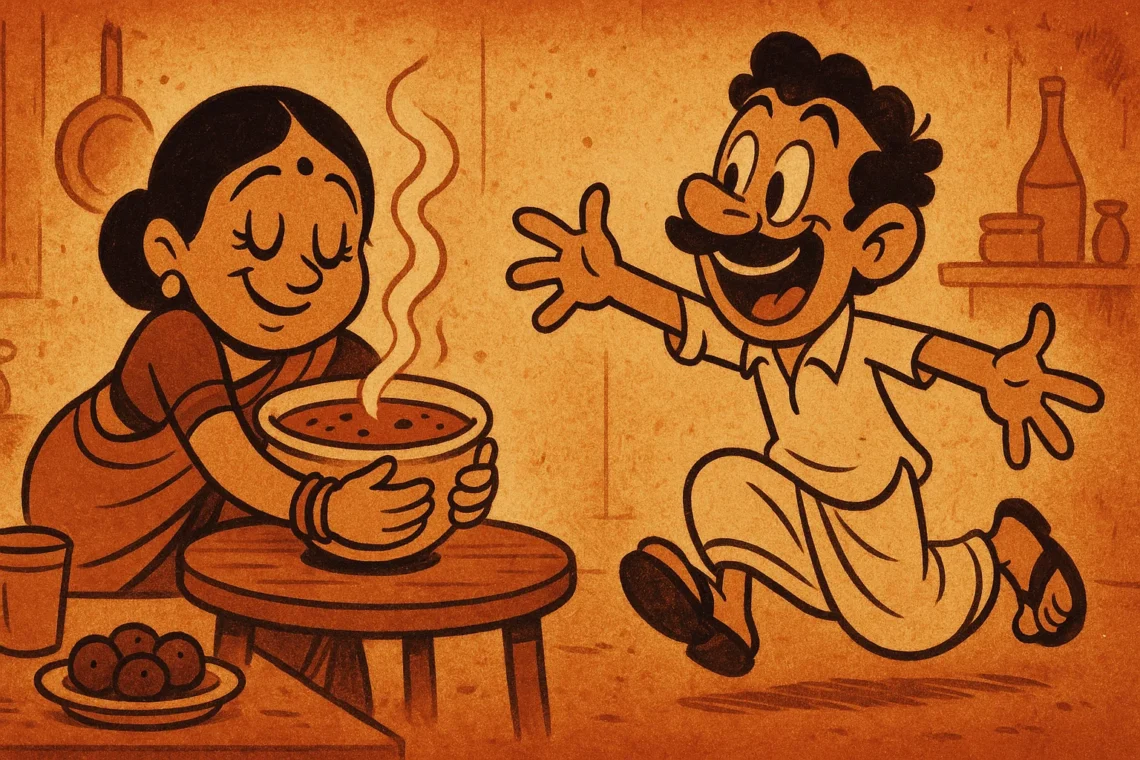You don’t need to be from the South to understand rasam. You just need to have had a day where nothing went your way. The kind where the world felt slightly too loud, your throat felt a little sore, and all your elaborate dinner plans dissolved into the simple longing for something warm, tangy, and familiar. That’s when rasam shows up—not as a meal, but as comfort. A bowl of hot rasam isn’t food. It’s a hug in edible form.
Growing up, rasam wasn’t the star. It lived in the background of grander meals. It followed sambar, came with the second helping of rice, or was served on quiet, uneventful evenings. But when you were unwell, overwhelmed, or just a little lost, rasam stepped forward. No garnish, no fuss—just heat, spice, and the silent reassurance of home.
The Science of Soothing
Rasam is not showy. It doesn’t rely on thick gravies or complicated techniques. Its ingredients are everyday things—tamarind, tomatoes, black pepper, cumin, garlic. Things you always have, even at the end of the week when the fridge looks like a desert. Yet somehow, when they come together, stirred gently in ghee and tempered with mustard seeds and curry leaves, the result is magic. Not the dramatic kind—more like a lullaby for your digestive system.
My mother had a rasam setting. She never wrote it down, never measured. Just moved with instinct. Her rasam was thin but not watery, spicy but not aggressive, tangy enough to clear your sinuses, and warm enough to loosen your shoulders. It didn’t just taste good—it made you feel seen.
The Bowl You Never Say No To
Even on days you claimed you weren’t hungry, when food felt like effort, you’d still say yes to rasam. Because it wasn’t just about eating—it was about receiving. You’d sip it straight from the katori, steam fogging your glasses. Let it run down your throat, where it soothed something unspoken. Maybe it was the pepper. Maybe it was the garlic. Maybe it was the fact that someone had made it just for you, even if you didn’t ask.
There was a particular kind of silence around a rasam meal. No clanging cutlery, no “how’s the spice level?” chatter. Just the sound of ladles and soft sniffles if someone had a cold. A bit of mashed rice, a trickle of ghee, a generous pour of rasam—and suddenly, you were whole again. Not full, but fed. Not fixed, but better.
The Rasam You Make for Yourself
Years later, when I moved away, rasam was one of the first things I learned to cook. Not because it was easy (though it is), but because it was essential. I needed to know I could take care of myself in the most primal way. So I called my mother. Asked for “her version.” She laughed and said, “There’s no version. Just taste and adjust.”
So I learned. How to crush pepper by hand. How to temper mustard seeds without burning them. How to know when the rasam was ready—not by time, but by scent. Now, when the world gets too much, I don’t reach for takeout. I make rasam. Even in Austin, even with substitute ingredients, even with whatever vessel I can find. It may not be perfect. But by the time I sit with that first hot bowl, I’m already halfway home.
The Hug That Lingers
Some foods are ceremonies. Others are gestures. Rasam is a gesture. It says, “I know today wasn’t great, but here’s something small and warm and made with care.” It doesn’t ask you to dress up or set the table. It doesn’t expect anything. It just offers warmth. Again and again and again.
And if that isn’t a hug, I don’t know what is.
Born in Mumbai, now stir-frying feelings in Texas. Writes about food, memory, and the messy magic in between — mostly to stay hungry, sometimes just to stay sane.












